If you’ve never had the opportunity to view a Bird of Paradise plant in person, it is worth the trip anywhere to see one. If you get a chance to go to a botanical garden or a country where this grows in the wild, do it!
I had the opportunity to see some in person a few years ago when we were touring the Longwood Botanical Gardens outside of Philadelphia. I was walking along enjoying all the stunning plants, when I turned a corner and there was a lovely Bird of Paradise. It was shocking to see how much the flower looked like a real bird!
It stopped me dead in my tracks and I just stood there staring to get a closer look. They say that it resembles an exotic bird peeking out from the broad large leaves and that is exactly what I saw. The beautiful orange and midnight blue flowers were striking. It was amazing to see such intricate detail in a flowering plant!
Table of Contents
Bird of Paradise Background/History
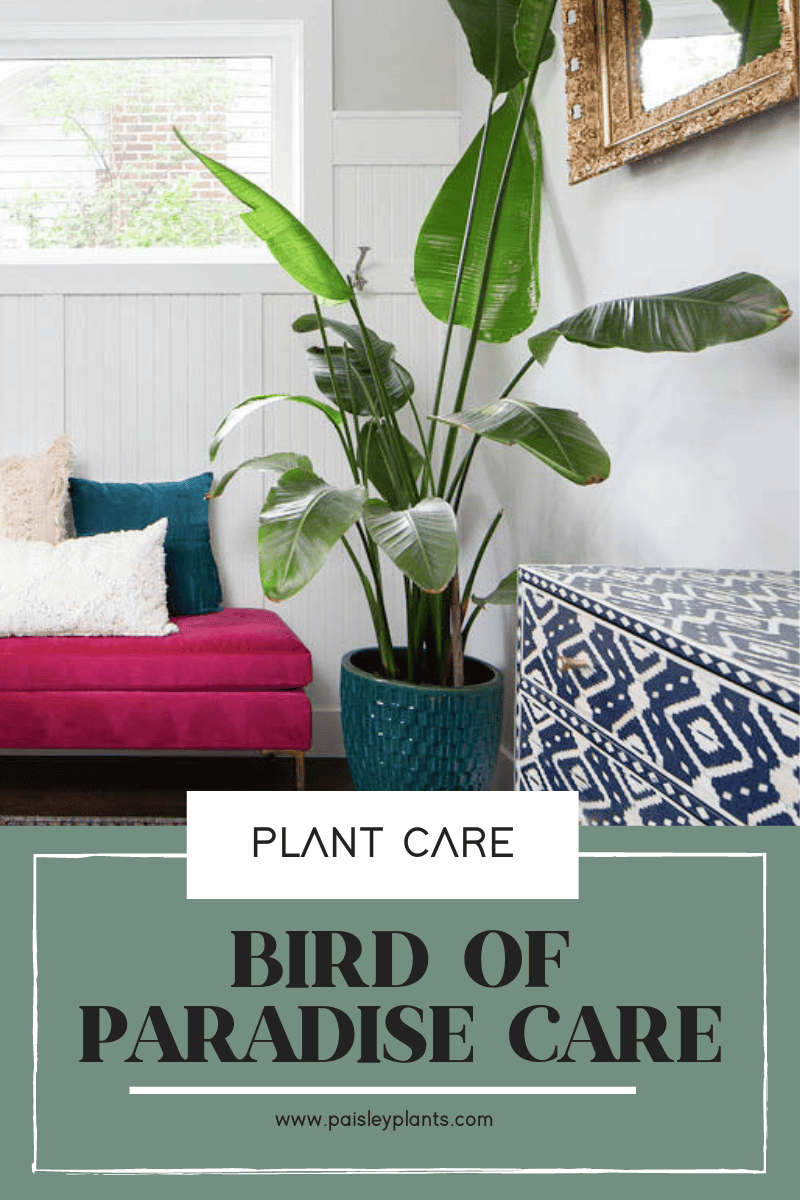
The Bird of Paradise is native to South Africa and grows in the warm climates there. It is a banana plant and named after the showy forest birds known as Birds-of-Paradise.
A common name for a Bird of Paradise plant is a Crane Flower. Their flowers resemble the head of a crowned crane bird.
Varieties
There are several varieties of Birds of Paradise. The two main types are the Bird of Paradise (strelitzia reginae) and the Giant White Bird of Paradise (Strelitzia nicolai) but there are many more in this species.
Toxicity
Although the toxicity of the Bird of Paradise plant is not well described, it is best to keep this plant away from both small children and pets. If ingested, it can cause mild gastrointestinal symptoms such as vomiting, diarrhea, and reduced appetite. Better to be safe than sorry!
Bird of Paradise Care Tips
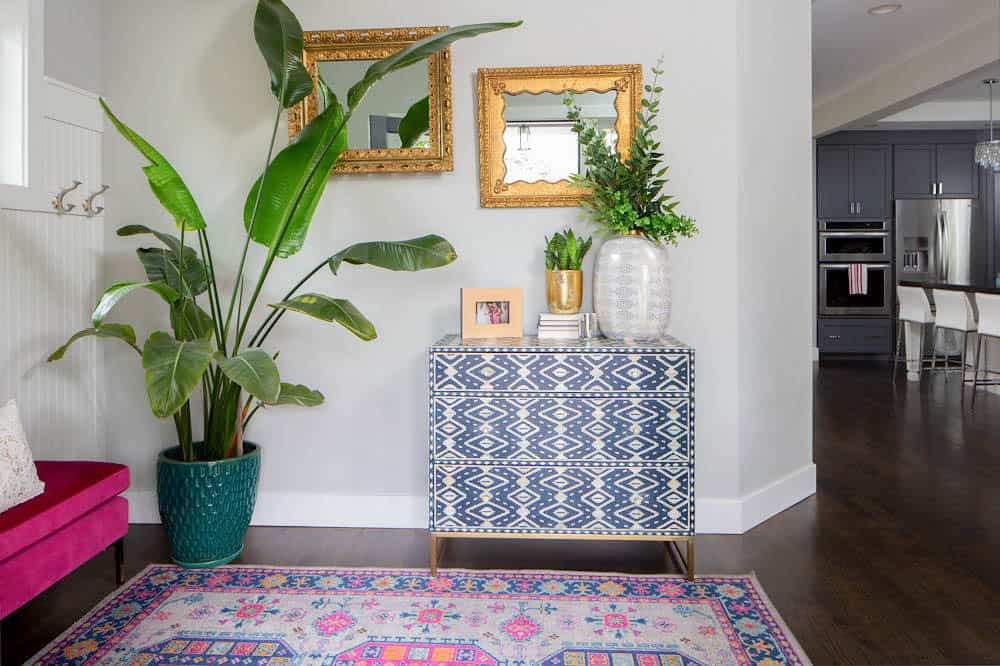
With proper care and the right conditions, your bird of paradise will brow strong and happy for years to come! Here are some of the best tips for a happy plant.
Water Requirements
These plants like moist, but not soggy, soil and being allowed to dry out slightly between waterings. The soil should not get totally dry, but also avoid overwatering the soil. If the top 2 -3 inches of the soil are dry, then it is safe to water the plant again.
Light Requirements
The preference for your Bird of Paradise as far as light goes is bright, direct sunlight. Placing it in a southern exposure window is an ideal place for it. Unlike other plants, direct bright light or full sun will not burn the leaves of this plant.
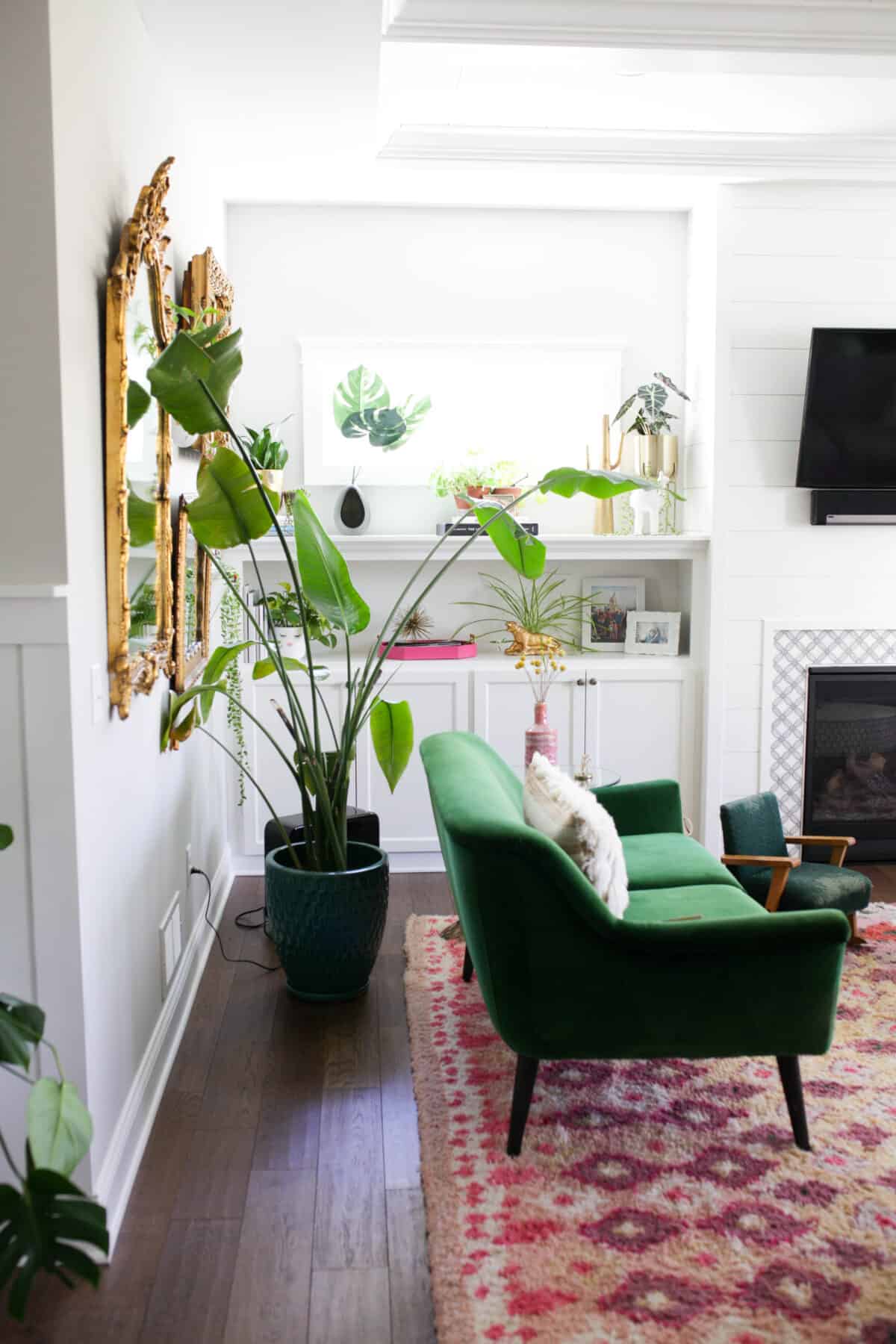
Soil Requirements
For the most part, these plants grow outdoors in warm climates. However, if you have a place indoors that you are able to grow one, you will need to have a good, well-draining soil mix to grow it in as an indoor plant. It will need to be a soil mix that ensures the excess water escapes, while retaining enough moisture to satisfy the root system.
You can either make your own mix or buy one already prepared. It should contain peat moss, perlite and regular potting soil. You could also use an organic formula containing coconut coir. This will increase drainage and acidity, which makes it a versatile choice for the Bird of Paradise.
Fertilizer Requirements
A fertilizer with a well balanced NPK ratio (nitrogen, phosphorus and potassium – 1:1:1) should work just fine for fertilizing your Birds of Paradise plants. Any commercial liquid fertilizer should have this ratio, but be sure to check on the packaging to be sure before you use it on your plant.
If you opt for the organic route, this would also work well for this type of plant. You will want to apply the fertilizer once every 6 – 8 weeks during the active growing season to provide essential nutrients. You may need to back off a bit during the winter months when the growth isn’t as active.

Temperature and Humidity Requirements
The optimum temperature range for your Bird of Paradise is between 65 and 80 degrees F. This is an evergreen tropical plant, so warmth is key to its continued growth. Be careful to keep the temperature above 50 degrees F for any length of time to avoid damage to your plant.
Keep the humidity levels between 60 and 70 percent. This will be the sweet spot for your plant because it is a tropical plant and does best in warmer climates with high humidity levels. A more humid environment will keep the plant healthy and also encourage the flowering stage of the plant, which is the ultimate goal for plant lovers!
Editor’s note: I have had a few Bird of Paradise plants for 7+ years and have yet to have them bloom. It can be very difficult to get these plants to bloom indoors so don’t think you’re doing something wrong if yours never blooms when kept indoors! I did do a flower bouquet class where we use bird of paradise flowers and they were just stunning! Here’s a look.

Pests and Diseases
Some of the most common pests for a Bird of Paradise plant are spider mites, fungus gnats, aphids, thrips, scale and mealybugs. One of the best ways to prevent infestations is to perform regular inspections on your plant.
Also keep in mind that proper watering techniques (not over or under watering) will go a long way to prevent pests. You can also avoid bringing new pests into your home by quarantining new plants away from your other plants before introducing them to the others.
The effective remedies to use for the pests are neem oil, insecticidal soap, and natural predators. You will need to use a heavy stream of water to clean off the pests from the plant, then wipe with neem oil or insecticidal soap.
There are also natural predators, such as parasitic wasps, green lacewings and ladybugs that can be bought to eat the pests. Do your research and find out what the pests are before you try this method, but there is a lot to learn from knowledgeable people either at your local garden center or online.
Some diseases that may affect your plant are scale, bacterial wilt, leaf blight, mealybugs or root rot. Regular inspection of the underside of the leaves will go a long way to ensure your plant doesn’t have any type of disease or bug infestation.
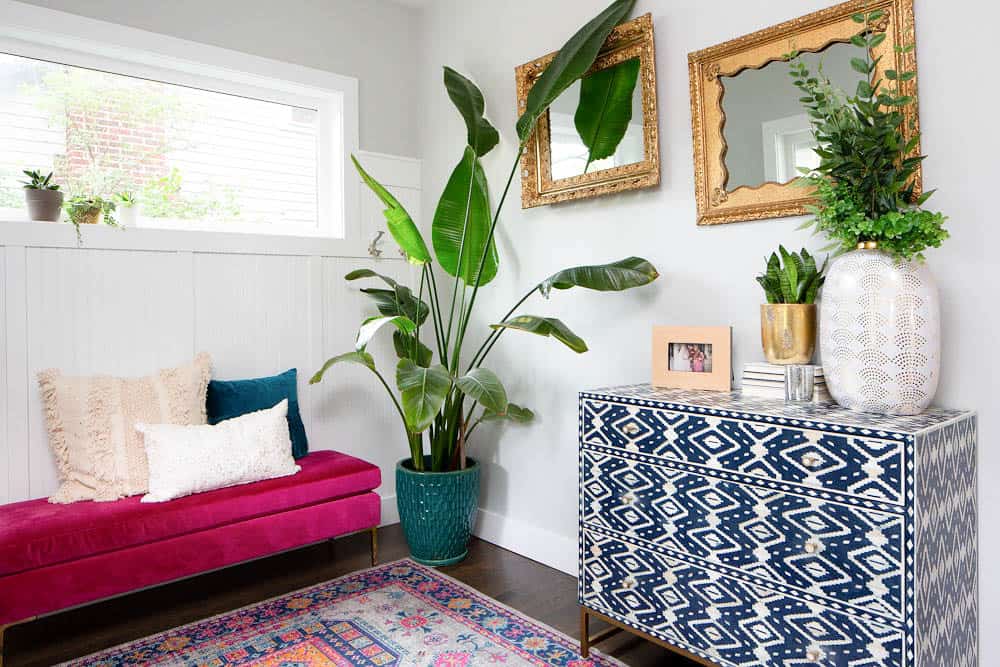
Pruning and Repotting
The first thing to do when you are deciding what to prune is to identify what needs to come off the plant. Spent or dead flowers should be the first pieces of the plant to remove. Then you will need to remove any dead or dying or older leaves. If a leaf is more than 50% dead, it needs to go! Also, if you have a lot of offshoots growing and they are crowding the plant, they should be removed.
As far as timing goes, the best time to do pruning is at the end of winter just before the plant is ready to come out of its dormant state. This will encourage lively spring growth. And, also remember to only remove one third of the plant to avoid harming the plant!
When it comes to repotting a Bird of Paradise, you will want to keep this in mind. These plants need to be root bound in order for them to flower. They require undisturbed, consistent and ideal conditions in order to bloom. If the roots are disturbed in any way, it may take as long as 2 -3 years before the plant blooms again.
If you are ready to repot your plant, however, early spring or summer are the best time to do so. When the roots start growing through the drainage holes in the bottom of the pot, then you should repot it. Remember, you should only repot your Bird of Paradise when absolutely necessary!
Common Problems
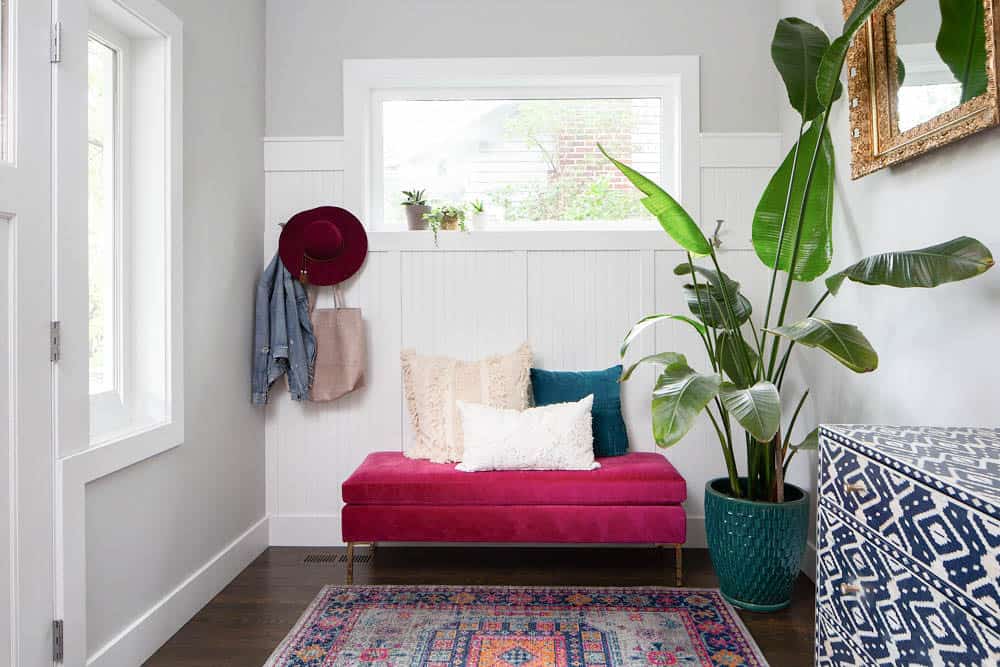
Browning Leaf Tips
This can be caused by many things such as too much or too little water, not enough humidity, insect infestations, or even a lack of light. You will have to check all of these situations to determine which one is causing the problem for your plant.
One other reason could be using tap water, which contains salts, chlorine, minerals and fluoride, which can cause the leaf tips to burn. This can be remedied if you allow your tap water to sit for 24 hours prior to using it to water your plant or by using distilled water. This will allow the substances to dissipate in the water and it can then be used for watering your plant.
Root Rot
Root rot can be caused if you overwater your plant and there is not proper drainage in the pot. Allowing your plant to sit in water and become soggy will not give the roots enough oxygen to grow properly. Always be sure your pot has good drainage holes. Remember to allow your plant to dry out at least for the top 1 – 2 inches before watering it again.
Curling Leaves
This problem is most likely due to underwatering your plant. You should give it a good shower when you water it. You can place it in the bathtub and give it thorough watering letting the excess water drain out. If it is very dry, you may need to let it sit in water for an hour or two to absorb the moisture through the root system.
FAQs
The splitting of the leaves of the Bird of Paradise is completely normal. As part of nature’s design, the split in the leaves allow wind to pass through the leaves so they don’t bend, break, or uproot the top heavy plant. The leaf splitting may not occur as much when the plant is grown indoors, but it is still a common occurrence and no cause for alarm!
Yes. You need to avoid prolonged exposure to cold temperatures. Lower temperatures (anything below 50 degrees F) can cause cold damage or “burning” turning blooms discolored and black.
If you don’t deadhead your Bird of Paradise, it will be filled with dead organic matter. This can result in fungal infections and disease that are common when the blooms and dead leaves are not cut from the living part of the plant. Be sure to keep your plant trimmed of spent blooms and dead leaves to maintain a healthy plant!
In Conclusion
If you enjoy natural beauty at its best, this plant is one for the books! Whether you see it at a botanical garden, are able to grow one at home, or just see it in a picture book or online, it is well worth viewing! As always, keep on growing!
